Grayling or Greyling may refer to:
Grayling or Greyling may refer to:

Thyme is the herb of some members of the genus Thymus of aromatic perennial evergreen herbs in the mint family Lamiaceae. Thymes are relatives of the oregano genus Origanum, with both plants being mostly indigenous to the Mediterranean region. Thymes have culinary, medicinal, and ornamental uses, and the species most commonly cultivated and used for culinary purposes is Thymus vulgaris.

Thymallus or graylings is a genus of freshwater salmonid ray-finned fish and the only genus within the subfamily Thymallinae. Although all Thymallus species can be generically called graylings, without specific qualification the term "grayling" typically refers to the type species Thymallus thymallus, the European grayling.
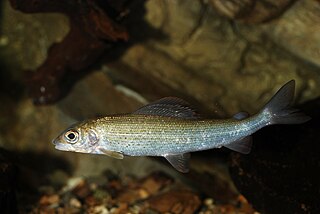
Thymallus thymallus, the grayling or European grayling, is a species of freshwater fish in the salmon family Salmonidae. It is the only species of the genus Thymallus native to Europe, where it is widespread from the United Kingdom and France to the Ural Mountains in Russia, and Balkans on the south-east, but does not occur in the southern parts of the continent. It was introduced to Morocco in 1948, but it does not appear to have become established there.

The Australian grayling is a primarily freshwater fish found in coastal rivers in south-eastern mainland Australia and Tasmania. In past decades it has also been known as the cucumber mullet or cucumber herring, for its cucumber-like odour.
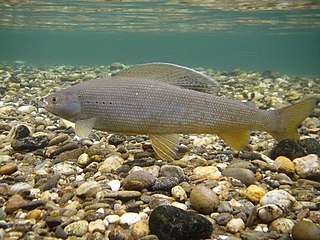
The Arctic grayling is a species of freshwater fish in the salmon family Salmonidae. T. arcticus is widespread throughout the Arctic and Pacific drainages in Canada, Alaska, and Siberia, as well as the upper Missouri River drainage in Montana. In the U.S. state of Arizona, an introduced population is found in the Lee Valley and other lakes in the White Mountains. They were also stocked at Toppings Lake by the Teton Range and in lakes in the high Uinta Mountains in Utah, as well as alpine lakes of the Boulder Mountains (Idaho) in central Idaho.
The East Siberian grayling(Thymallus pallasii) is a grayling in the salmon family Salmonidae. Males can reach a size of 44 cm (17 in).

The Retropinnidae are a family of bony fishes that contains the Southern Hemisphere smelts and graylings. They are closely related to the northern smelts (Osmeridae), which they greatly resemble, but not to the northern graylings (Thymallus). Species from this family are only found in southeastern Australia and New Zealand. Although a few species are partly marine, most inhabit fresh or brackish water.

The grayling or rock grayling is a species in the brush-footed butterfly family Nymphalidae. Although found all over Europe, the grayling mostly inhabits coastal areas, with inland populations declining significantly in recent years. The grayling lives in dry and warm habitats with easy access to the sun, which helps them with body temperature regulation.
Cucumberfish is a common name for several fish and may refer to:
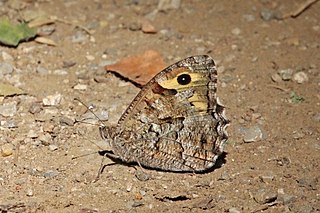
Hipparchia is a genus of butterflies within the family Nymphalidae. The genus was erected by Johan Christian Fabricius in 1807.

The New Zealand grayling is an extinct species of fish that was endemic to New Zealand. It was known to the Māori by many names, including pokororo, paneroro, kanae-kura, and most commonly, upokororo. The variety of names for the fish came from either multiple tribes, or to describe the fish at different periods of its life cycle. Even though this fish is named grayling, it is not related to European or American graylings and lacks the large dorsal fin ‘typical’ graylings are characterised by. It is, however, closely related to the Australian grayling. The New Zealand grayling was an amphidromous species, migrating between freshwater and saltwater during different seasons as well as stages in their life cycle. The species was abundant during the 19th century, however, the population decreased during the early 1900s with the last confirmed sighting of the fish being in 1923.
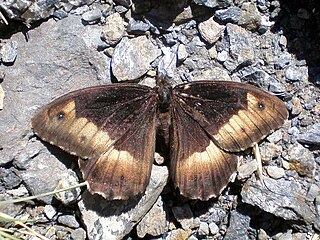
Hipparchia fagi, the woodland grayling, is a butterfly of the family Nymphalidae.

Hipparchia statilinus, the tree grayling, is a butterfly of the family Nymphalidae.
T. tricolor may refer to:

Prototroctes is a genus of New Zealand smelts containing one species native to Australia and another, now extinct, species that was native to New Zealand.
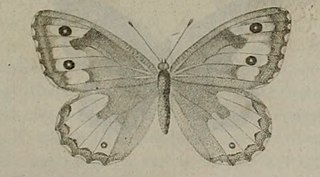
Hipparchia aristaeus, the southern grayling, is a butterfly of the family Nymphalidae. It was described by Franco Andrea Bonelli in 1826. It is found in North Africa, southern Europe and Asia Minor. The habitat consists of hot dry rocky areas.

The Montana Arctic grayling is a North American freshwater fish in the salmon family Salmonidae. The Montana Arctic grayling, native to the upper Missouri River basin in Montana and Wyoming, is a disjunct population or subspecies of the more widespread Arctic grayling. It occurs in fluvial and adfluvial, lacustrine forms. The Montana grayling is a species of special concern in Montana and had candidate status for listing under the national Endangered Species Act. It underwent a comprehensive status review by the U.S. Fish and Wildlife Service, which in 2014 decided not to list it as threatened or endangered. Current surviving native populations in the Big Hole River and Red Rock River drainages represent approximately four percent of the subspecies' historical range.

Hipparchia genava, the lesser rock grayling, is a species of butterfly in the family Nymphalidae.
The Kamchatka grayling is a grayling in the salmon family Salmonidae. The fish grows up to 50 cm (20 in). It is found in freshwater habitats of the Russian Far East, including the Kamchatka Peninsula, eastern part of Magadan Oblast and northwards to the southern Chukchi Peninsula.